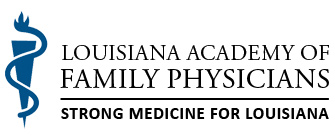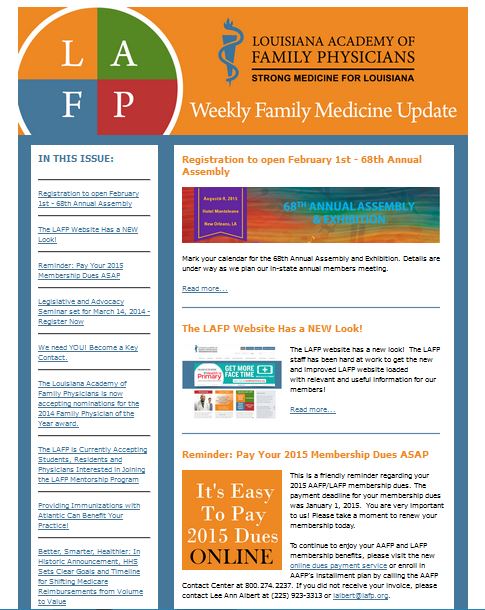Benefits of the PCMH
Why Transform to a PCMH?
Building a patient-centered medical home (PCMH) requires hard work from you and your practice team. There are no shortcuts—change requires time, money, dedication, and sustained effort, and you will not see results overnight. Faced with these challenges, practice transformation seems a daunting prospect. But the need for change is real: Health care in the United States is moving away from a volume-based payment system and toward a value-based system. The effort you put into PCMH transformation not only positions you to better respond to this changing health care landscape, but with time, it also benefits your patients, your practice, and your bottom line.
Benefits for Your Patients
- Engaged, happier, and more satisfied patients
- Better coordinated, more comprehensive and personalized care
- Improved access to medical care and services
- Improved health outcomes, especially for patients who have chronic conditions
Benefits for Your Practice
- Joy in practice: increased physician and staff member satisfaction
- Physicians and staff members who practice at the top of their licenses
- Improved safety and quality of care
Benefits for Your Bottom Line
- A more efficient use of practice resources, resulting in cost savings
- Opportunities to participate in payment incentives for adopting the functions of a PCMH
- A practice that is better prepared to succeed once primary care payment reform has become widespread (e.g., value-based payment or global payment)
- A practice that is better prepared to participate in accountable care organizations
PCMH Incentives, Recognition and Accreditation Programs
PCMH Incentive Programs
Patient-centered medical home (PCMH) incentive programs are local, state, and public/private payer initiatives that offer payment incentives to participating practices that adopt the functions of a PCMH. Examples of initiatives that are operating in Louisiana include the following programs:
- Quality Blue Primary Care Program: Quality Blue Primary Care (QBPC) is Blue Cross and Blue Shield of Louisiana's innovative population health and quality improvement program. QBPC is designed to get better outcomes for patients with chronic diseases, support doctors and transform healthcare delivery. Learn More
- Bayou Health Medicaid Coordinated Care Networks
- Cigna Accountable Care Program - The Baton Rouge Clinic ACO: Cigna and the Baton Rouge Clinic have launched a collaborative accountable care initiative to improve patient access to health care, enhance care coordination and achieve the “triple aim” of improved health, affordability and patient experience. Learn More
Note: Many PCMH incentive programs require participation in a designated PCMH recognition or accreditation program (see below).
PCMH Recognition and Accreditation Programs
A number of national PCMH recognition and accreditation programs are available. Some practices are required to complete a PCMH recognition program (e.g., for participation in an accountable care organization [ACO] or PCMH incentive program), but PCMH recognition for many practices is voluntary.
To determine whether your practice is required to participate in a recognition or accreditation program, refer to your ACO, PCMH incentive program, federal grant (e.g., Health Resources and Services Administration), and major practice payer (e.g., Medicaid, private insurance, etc.) agreements. If recognition is required, your agreement will typically designate a specific recognition program for you to complete.
If you are not required to participate in a recognition program but choose to do so anyway, research the available programs to determine which is most appropriate for your practice. Be sure to consider the application cost, data and documentation requirements, and staff resources required to complete the application process. Use this information to formulate a complete picture of the total costs—monetary and resource-wise—associated with each program.
National Recognition and Accreditation Programs
Direct Primary Care
DPC: An Alternative to Fee-for-Service
The Direct Primary Care Model
The direct primary care (DPC) model gives family physicians a meaningful alternative to fee-for-service insurance billing, typically by charging patients a monthly, quarterly, or annual fee (i.e., a retainer) that covers all or most primary care services including clinical, laboratory, and consultative services, and care coordination and comprehensive care management. Because some services are not covered by a retainer, DPC practices often suggest that patients acquire a high-deductible wraparound policy to cover emergencies. Direct primary care benefits patients by providing substantial savings and a greater degree of access to, and time with, physicians.
At the close of the Louisiana Legislative Session, there was the passage of Senate Bill 516. Louisiana became one of four of the first states to pass direct primary care (DPC) legislation for primary care physicians. This legislation provides a framework for health care purchasing that gives family physicians and their patients a meaningful alternative to the conventional fee-for-service (FFS) payment paradigm for primary care services.
What Members Need to Know
The defining characteristic of a DPC practice is that it offers patients the full range of comprehensive primary care services—including acute and urgent care, regular checkups, preventive care, chronic disease management, and care coordination—in exchange for a flat, recurring membership fee that typically is billed to patients monthly.Direct primary care benefits patients by providing a greater degree of access to—and time with— their physician. The DPC model promotes the development of more meaningful physician-patient relationships. It also rewards family physicians for providing comprehensive, longitudinal care for the whole person, while reducing the overhead costs and negative incentives associated with FFS billing of a third-party payer. Direct primary care and concierge care are not synonymous. In practices offering concierge care, the patient typically pays a high retainer fee in addition to insurance premiums and other plan obligations (e.g., copays, out-of-pocket expenditures), and the practice continues to bill the patient’s insurance carrier.
Direct primary care rewards family physicians for caring for the whole person while reducing the overhead and negative incentives associated with fee-for-service, third-party-payer billing. Other benefits to physicians include:
- decreased practice overhead
- fewer medical errors / less exposure to risk
- improved practice collections rates
- more time with patients
- reduced patient volume
- zero insurance filing
Because DPC physicians are no longer generating revenue solely on the basis of how many patients they see per day, many report that they have significantly more time to spend with patients in face-to-face visits. Additionally, many DPC physicians provide a larger array of non-face-to- face services, such as tele-visits or e-visits, for their patients, to ensure primary care services can be accessed in a manner most convenient for patients and their families.There are a number of reported outcomes of increasing visit time, including improved patient experience of care and improved clinical outcomes as patients become more engaged in managing their own health care. The only outcomes registering an increase were the number of primary care visits (which is to be expected and desired) and an almost-unanimous patient approval rating.





 The LAFP Weekly Family Medicine Update is an LAFP membership service intended to provide timely family medicine information to your e-mail inbox. The newsletter contains information about healthcare legislation, partnerships, conference opportunities and other need-to-know member news.
The LAFP Weekly Family Medicine Update is an LAFP membership service intended to provide timely family medicine information to your e-mail inbox. The newsletter contains information about healthcare legislation, partnerships, conference opportunities and other need-to-know member news. Louisiana Family Doctor is LAFP's quarterly journal. Subject matter includes features on sports medicine, healthcare legislation, medical journal reviews as well as a range of other topics that affect family physicians.
Louisiana Family Doctor is LAFP's quarterly journal. Subject matter includes features on sports medicine, healthcare legislation, medical journal reviews as well as a range of other topics that affect family physicians.